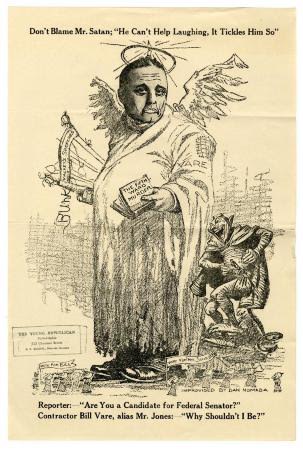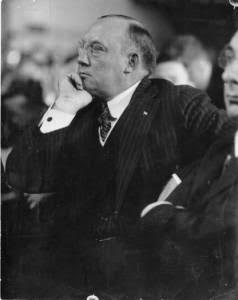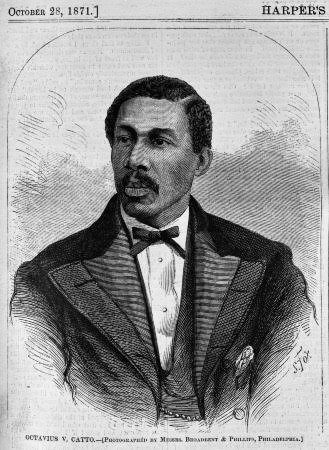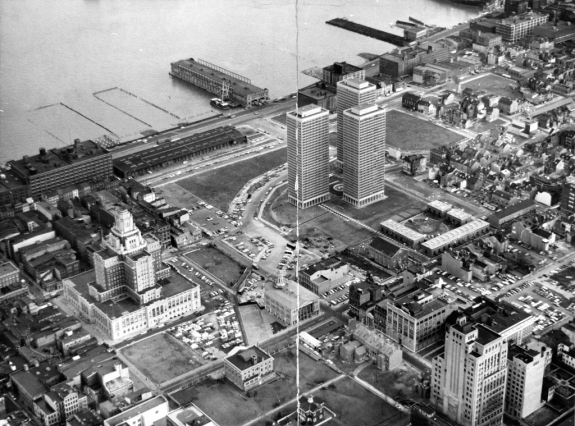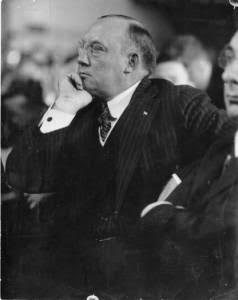Bloody Fifth Ward
By Frank Fuller
Essay
Philadelphia’s Fifth Ward, south of Chestnut Street near the Delaware River, became infamous in the late nineteenth century for election-day riots among the Irish, Black people, and the police, with ward boss William “Bull” McMullen (1824-1901) at the center of the violence. By the early twentieth century, the area had become known as the “Bloody Fifth,” a district of rampant political violence where politicians exploited residents, mostly immigrants, for their collective vote a short distance from Independence Hall.
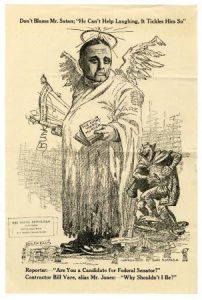
The Fifth Ward originated as part of the reorganization of election wards following the consolidation of Philadelphia city and county in 1854. Originally encompassing the area from Chestnut Street to South Street, between the Delaware River and Seventh Street, the Fifth Ward was part of the oldest section of Philadelphia. Long home to immigrants and African Americans, the area’s southernmost border along South Street and its vicinity had been the scene of race riots during the 1830s and 1840s. By the early 1850s, the collapse of the Whig party also led to new groups arising to seize political power, pitting newer Irish immigrants against nativist groups, at a time when the city also sought to combat disorder by professionalizing the police force.
By the late nineteenth and early twentieth centuries the area became increasingly crowded and diverse, housing predominantly Russian Jews and African Americans, with smaller numbers of Italians, Irish, and persons of Slavic ancestry. While more prosperous Philadelphians moved to newer and more fashionable areas of the city, like Rittenhouse Square, poor newcomers to the Fifth Ward lived in and amid crowded streets and alleys, apartments, taprooms, cheap rooming houses, warehouses, and small stores. In this increasingly marginalized district, murder and prostitution became chronic, and law enforcement nonexistent. Disease, such as tuberculosis, also plagued the area into the early twentieth century.
Election Day Violence
By the late nineteenth century, Election Day violence, fraud, and other crimes including murder, often relating to immigrant and inter-ethnic conflicts between rival factions, became widespread. After decades of discrimination by nativist groups and the white Anglo-Saxon Protestant establishment, the Irish population grew to become a political force. As the Irish competed for the blue-collar and unskilled labor jobs and sought to overcome stereotypes about being unclean and lazy, they also began to displace many Black residents from neighborhoods that had been predominantly African American.
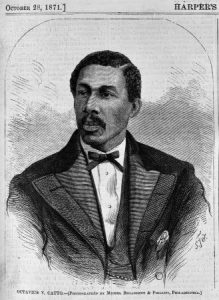
On Election Day in 1871, violent conflict among the Irish, African Americans, and the police spilled over in both the Fourth and Fifth Wards after Black men obtained the right to vote for the first time. On that day, murder claimed the life of African American civil rights activist and educator Octavius Catto (1839-71). These wards had become Republican strongholds shadowed by the influence of Fourth Ward boss William McMullen. Rivalries in the Bloody Fifth persisted well into the early to mid-twentieth century as two factions of the local Republican Party, led by William H. Vare (1867-1934) and Jim McNichol (1864-1917), battled for votes and lucrative contracts for city services.
At the pinnacle of the era of Republican machine politics controlled by ward bosses, the Fifth Ward’s most notorious conflict occurred during a heated primary race in 1917 for the office of Select Councilman and ended in the death of a police officer. This incident centered on the election of the Vare-allied Isaac Deutsch (1874-1919) and James A. Carey, the McNichol candidate also aligned with Sen. Boies Penrose (1860-1921), the Republican leader in Philadelphia and in Pennsylvania. According to later testimony, Deutsch’s supporters brought in eighteen men from New York City’s Frog Hollow Musketeers gang who attacked and beat Carey. While defending Carey, police Officer George Eppley (1887-1917) was gunned down and died soon after in a hospital. Though not directly tied to local inter-ethnic violence, the hitmen for the Frog Hollow gang were Italian, a newer immigrant group seeking a foothold in American society similar to the earlier history of the Irish.
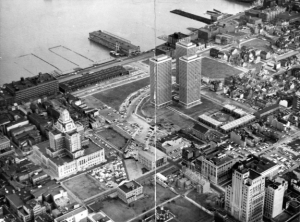
The gunmen from the New York gang who shot Eppley were later convicted of second-degree murder. Deutsch and six officers were found responsible, guilty of conspiracy, and imprisoned. Philadelphia Mayor Thomas B. Smith (1869-1949) was also indicted for interfering with an election. Smith, president of a bail bonds company, was alleged to have said “clubs would be trumps” during the primary contest and accused of abusing his position to assist Deutsch by sending policemen to protect the Vare machine candidate. Smith was acquitted of conspiracy to murder and other charges in early 1919, but suspicion followed him until his term ended in 1920.
The violence of 1917 triggered local protests and helped reform candidates temporarily halt the political machine. Although the Republican political machine began to decline by the mid-1930s, as many voters switched to the Democratic Party during the era of the New Deal, violence continued to flare up well into the 1940s because poverty and poor living conditions persisted. In the second half of the twentieth century, however, redevelopment of the area as Society Hill and gentrification changed the character and dynamics of the community and buried the Fifth Ward’s violent past.
Frank Fuller is an Adjunct Professor of Political Science at Temple University and Chestnut Hill College. He has also taught at Villanova University and Rowan University. He holds a Ph.D. in Political Science from Clark Atlanta University, an M.S. in International Affairs from the Georgia Institute of Technology, and a B.A. in Politics from Oglethorpe University. (Author information current at time of publication.)
Copyright 2016, Rutgers University
Gallery
Backgrounders
Links
- PhilaPlace: Lombard Street Riots Site (Historical Society of Pennsylvania)
- Octavius Catto Historical Marker (ExplorePAHistory.com)
- Philadelphia Mayor May Be Responsible For Riot (Illinois Digital Newspaper Collection, University of Illinois)
- Cleaning Up Philadelphia (Philly History Blog)
- The Jewish Quarter of Philadelphia (Philly History Blog)
